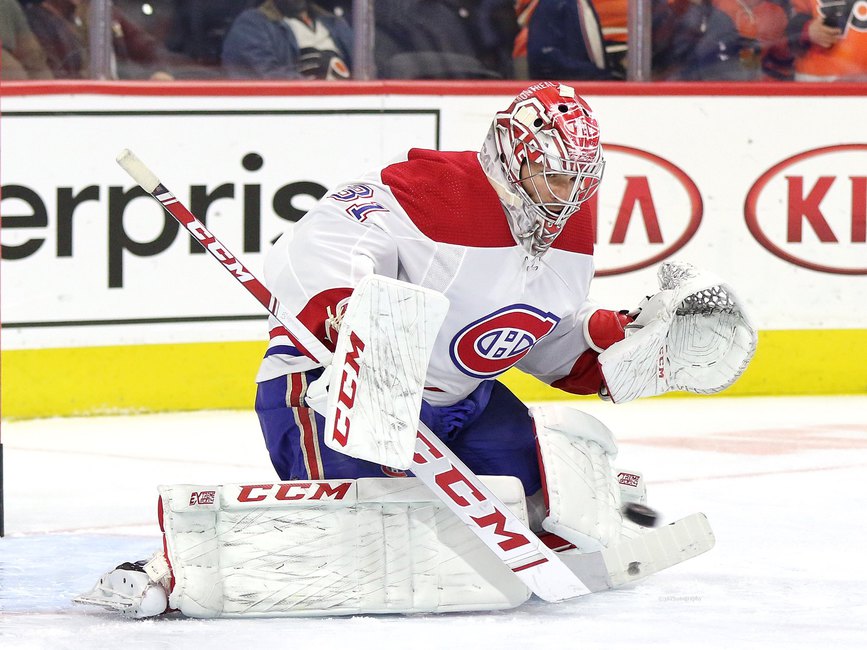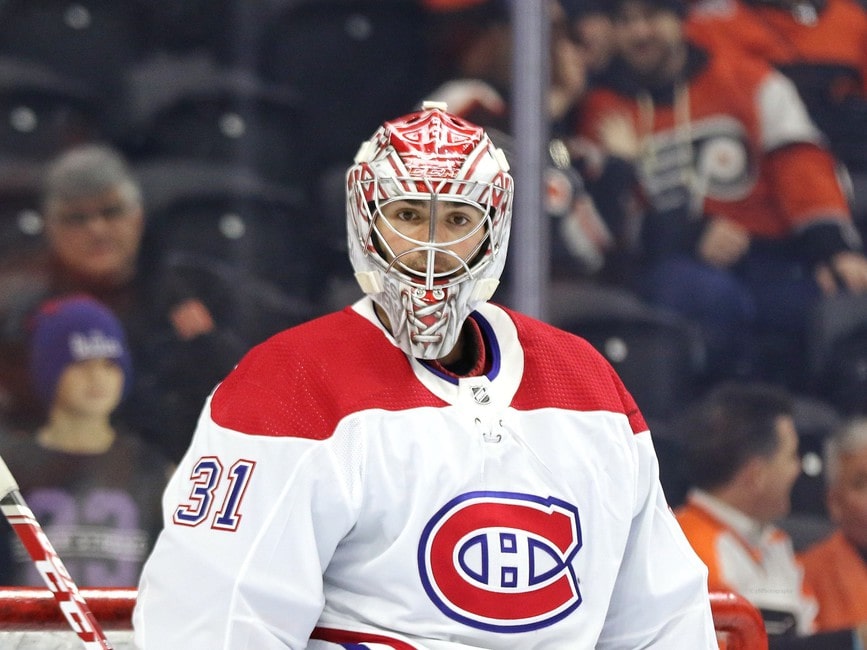The end comes for every era. For the Montreal Canadiens and Carey Price, that end won’t be a stick salute after a final game or a tearful press conference. It will be a transaction, a business dealing announced on a Monday in September that formally closes the book on one of the most dominant goaltending careers in franchise history. Reports from TVA Sports’ Jean-Charles Lajoie are solidifying what has been whispered about for months: the Canadiens are set to trade Carey Price’s contract, with an announcement expected as early as Monday, September 1st.
This isn’t a trade for a player; Price’s devastating knee injury has made it painfully clear his playing days are over. This is a trade of a contract, a ghost on the payroll, and a $10.5 million cap hit that has become an anchor on the ambitions of a rebuilding franchise. For the casual fan, placing Price on Long-Term Injured Reserve (LTIR) seems like a simple fix. But for General Manager Kent Hughes and the Canadiens’ front office, the reality is far more complex. This move isn’t just about clearing cap space; it’s a strategic masterstroke of salary cap chess, designed to escape financial purgatory and unlock the team’s future.
The $5.5 Million Handshake
The timing of this impending trade is no coincidence. September 1st is a crucial date on the NHL calendar for one very specific reason: signing bonuses. On that day, the Montreal Canadiens are scheduled to pay Carey Price a $5.5 million signing bonus, the final significant payment of his eight-year, $84 million contract. Once that cheque is cashed, the actual cash owed to Price for the remainder of the season is a mere fraction of his cap hit.
This makes his contract immensely more attractive to a potential trade partner. A team like the San Jose Sharks or Chicago Blackhawks, both in deep rebuilds, can acquire Price’s contract, absorb the full $10.5 million cap hit for accounting purposes, but only be on the hook for a small portion of the real-dollar salary. In exchange for providing this cap compliance service, they will almost certainly receive assets—draft picks or prospects—from Montreal. It’s a classic hockey transaction: a contender (or in this case, a team with aspirations) paying a rebuilder to take on a financial burden. For the acquiring team, it’s a low-cost way to weaponize cap space. For the Canadiens, paying that bonus is the final handshake before parting ways, the cost of doing business to secure their financial future.
Escaping the LTIR Mirage
Many fans understandably ask, “Why not just keep him on LTIR?” It’s a valid question. During the regular season, LTIR provides a team with relief, allowing them to exceed the salary cap by the amount of the injured player’s contract. However, this relief is a mirage that vanishes in the off-season. From the final game of the Stanley Cup Final until the first day of the next season, Carey Price’s $10.5 million cap hit is very real. It sits squarely on the Canadiens’ books, acting as a “true hit” against the upper limit.

The Hidden Cost of Youth: The Performance Bonus Problem
Perhaps the most sophisticated and urgent reason for this trade lies in the fine print of the Collective Bargaining Agreement: performance bonus overages. This is where the long-term cost of the Price contract becomes truly damaging.
Here’s the scenario: The Canadiens have a roster brimming with talented young players on entry-level contracts (ELCs), like Lane Hutson. These contracts are often laden with performance bonuses for hitting certain statistical milestones. When the team uses Price’s LTIR relief to exceed the salary cap during the season, they don’t have enough remaining cap space to pay out these earned bonuses. The result? The total value of the earned bonuses gets carried over as a penalty, a dead cap charge, on the following season’s salary cap.
This isn’t a hypothetical problem; it’s already happening. The Canadiens are facing a $1.7 million cap charge for the upcoming season specifically because players like Hutson hit their bonuses while the team was operating in LTIR territory due to Price. Trading Price’s contract allows the team to operate under the “real” cap ceiling, pay out earned bonuses from their existing space, and avoid crippling future penalties. It’s a move of proactive financial management, preventing a future cap crisis before it begins.
Clearing the Deck for a Centerpiece
Ultimately, this trade is an enabling move. It is the necessary first step to facilitate the next move. Kent Hughes has been transparent about his desire to acquire a natural center to bolster his forward group. The current market dictates that acquiring such a player often requires a package of high-end draft picks and prospects. By shedding Price’s contract and the associated financial complexities, Hughes not only gains cap flexibility but also clears the deck to make a significant acquisition without convoluted financial gymnastics.
The trade of Price’s contract signals to the rest of the league that Montreal is open for business. They will have clean books and the capacity to take on salary if needed in a different trade. This move opens the door to possibilities that simply didn’t exist with Price’s LTIR situation hanging over the organization. It is the domino that must fall before any other major pieces can be put into play.
Also on the EDGE – Goaltending is No Longer the Canadiens’ Biggest Question Mark
The Uniform Changes, The Legacy Remains
It will be jarring for Canadiens fans to see Carey Price’s name officially associated with another franchise, even if only on paper. But this is a business transaction, not an erasure of history. Price’s legacy in Montreal is etched in stone. He was the stoic saviour, the franchise cornerstone for over a decade. The fifth-overall pick in 2005 who went on to win the Hart, Vezina, Jennings, and Ted Lindsay awards in a single, magical 2015 season. The man who dragged the team to the 2021 Stanley Cup Final. With 361 wins and a career .917 save percentage, his place among the pantheon of Canadiens goaltending legends is secure.

This trade is an acknowledgement of a career cut short by injury and the financial realities of the modern NHL. It is widely expected that when the time comes for him to officially retire, he will sign a symbolic one-day contract to hang up his skates as a member of the Montreal Canadiens, the only team he ever truly played for. He gave his body to the franchise and earned every dollar of his contract. This final transaction, while emotionally complicated, is the logical and necessary conclusion to his tenure. It’s not a goodbye, but a “thank you for your service,” as the organization he defined for so long finally turns the page and builds for the future he unfortunately cannot be a part of on the ice.
Created with the aid of Gemini AI
